Filling in the Chines on a Nordic Tug 32 to Eliminate Wave Slap
By
Robert Claycomb — Deneige, 32-276, Santa Barbara, CA
We anchor out often, but the wave slap noise was a real serious problem for both my wife and myself. I seriously considered selling our boat. But weighing all of the cost pros and cons, I felt that selling was not a good option.
I first tried spraying under the front berth with a dampening material called Silent Running; minimal to no effect. I then tried filling the entire under-berth area with swim noodles, in an effort to quite it down; no effect. I then tried the exterior swim noodle in the chine; no effect. I was next going to try the front diaper solution, but I felt that was not a realistic option.
I contacted the Ventura Harbor Boatyard (VHBY), who has a comprehensive facility. Using information that I obtained from available sources and discussions with the very knowledgeable yard staff, they put together a game plan. In April, 2017, I contracted with them to the job.
Much like the Nordic Tugs factory does on the new NT40, VHBY started at the bow, where they softened the forward chine edges just before the waterline and going 18 inches past the water line. They used blocks of a high tech material called Coosa in varying thicknesses. The Coosa was glued to the hull using a two-part epoxy and the Coosa gaps were filled with 3M putty. A layer or two of cloth was applied, followed by layers of glass and then gelcoat. The entire length was seven feet measuring from the bow going aft, this includes the fairing to zero at both ends.
Recently, I brought my boat back up the coast from Ventura to Santa Barbara. I took note of the bow spray at 8, 9, 12, and 15 knots. At 8 and 9 knots there was no change in the spray pattern for the most part. But at 12 knots and higher the spray seemed further aft than I remember, but no water was blown into my open doors.
It was a pretty labor-intensive job which of course translates into somewhat expensive, about $6,000. Was it worth it; definitely yes. Is it perfectly quiet now; no, but it is 100 percent quieter than before. Listen to the audio files before and after and judge for yourself.
As you can see from the comparison photos, the completed job looks like it belonged there.
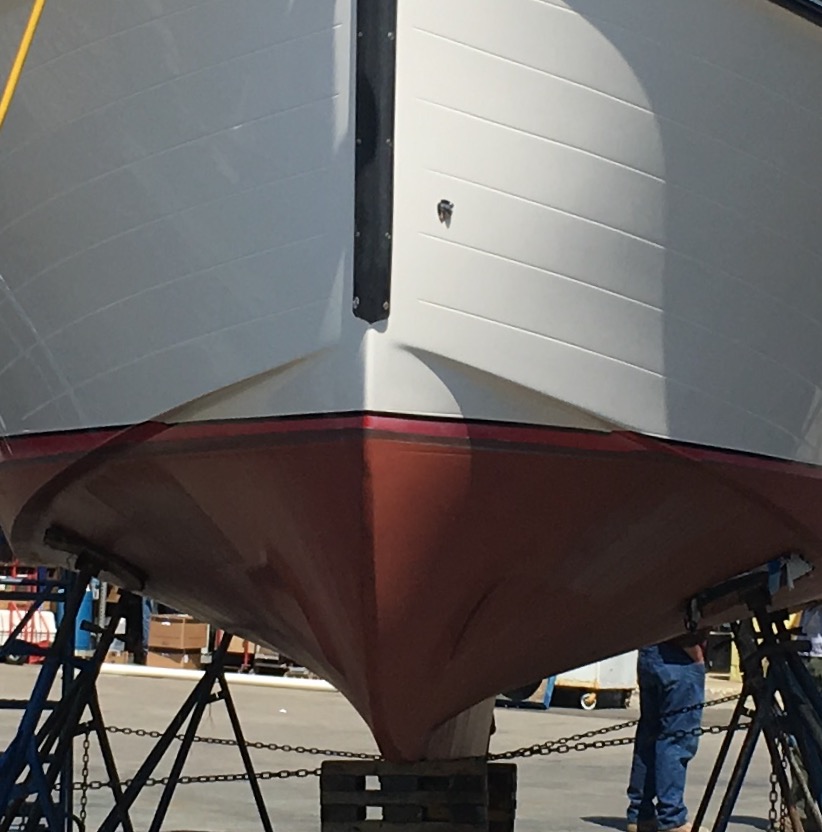 |
|
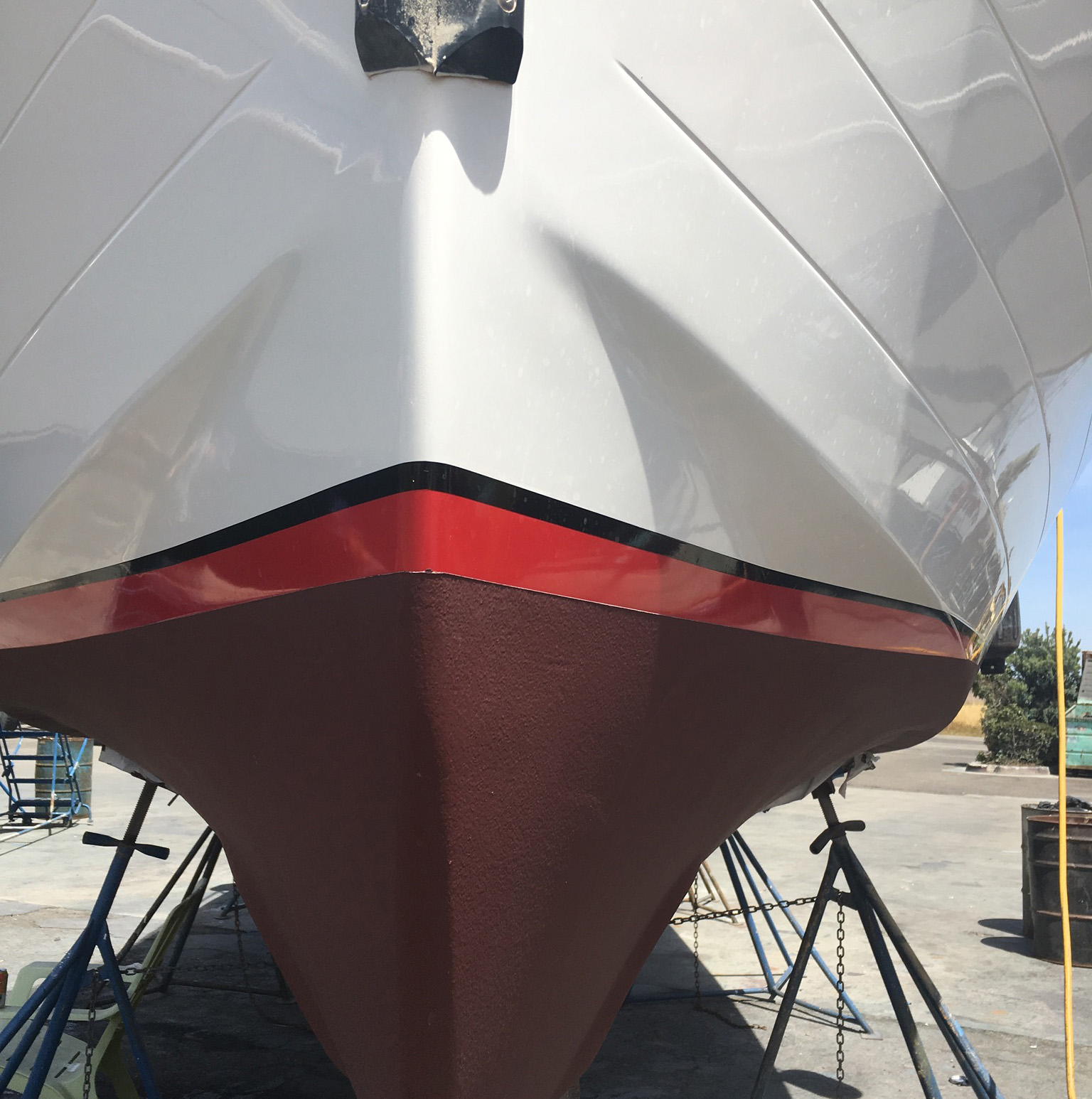 |
| Before |
|
After |
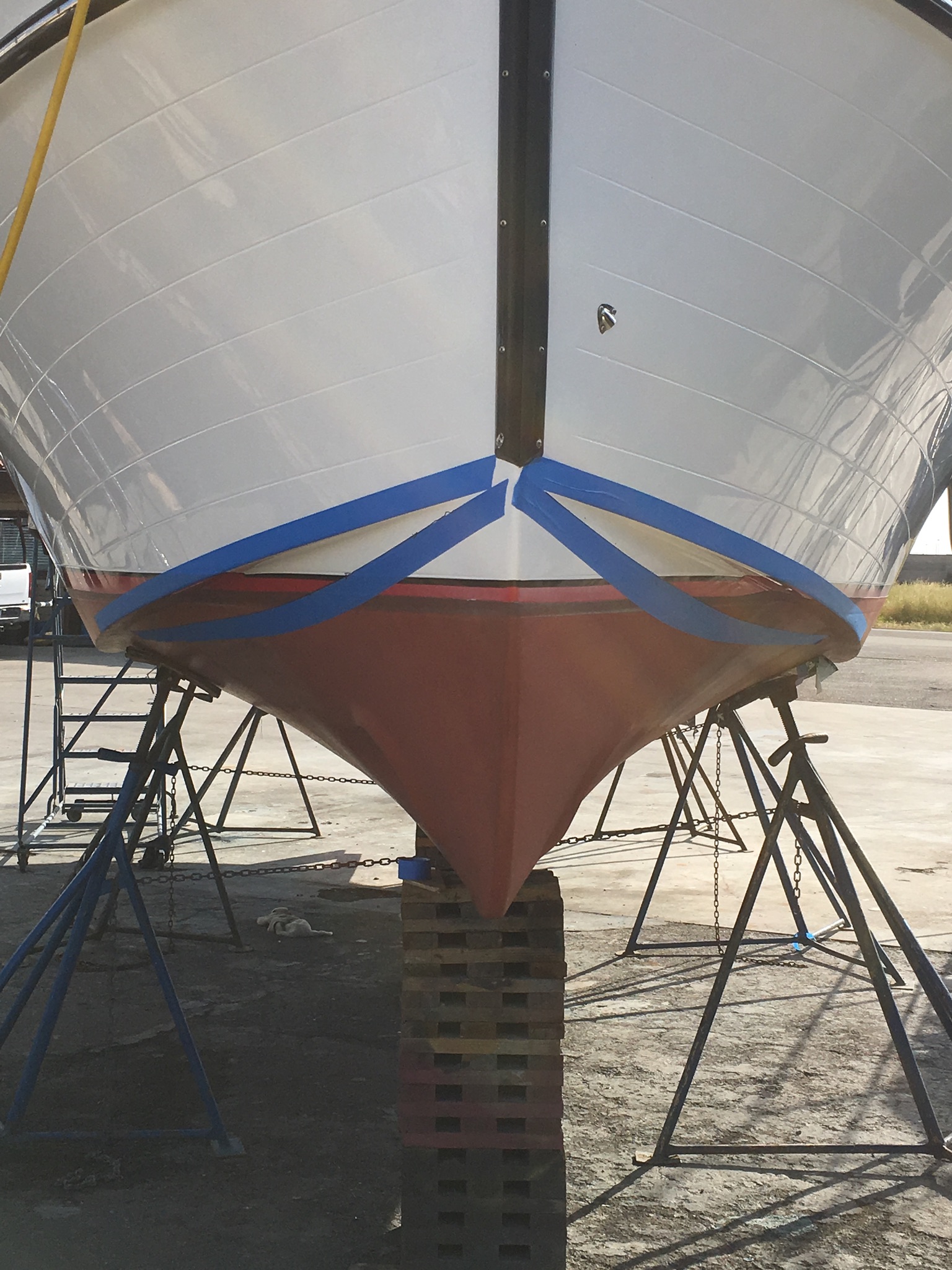 |
|
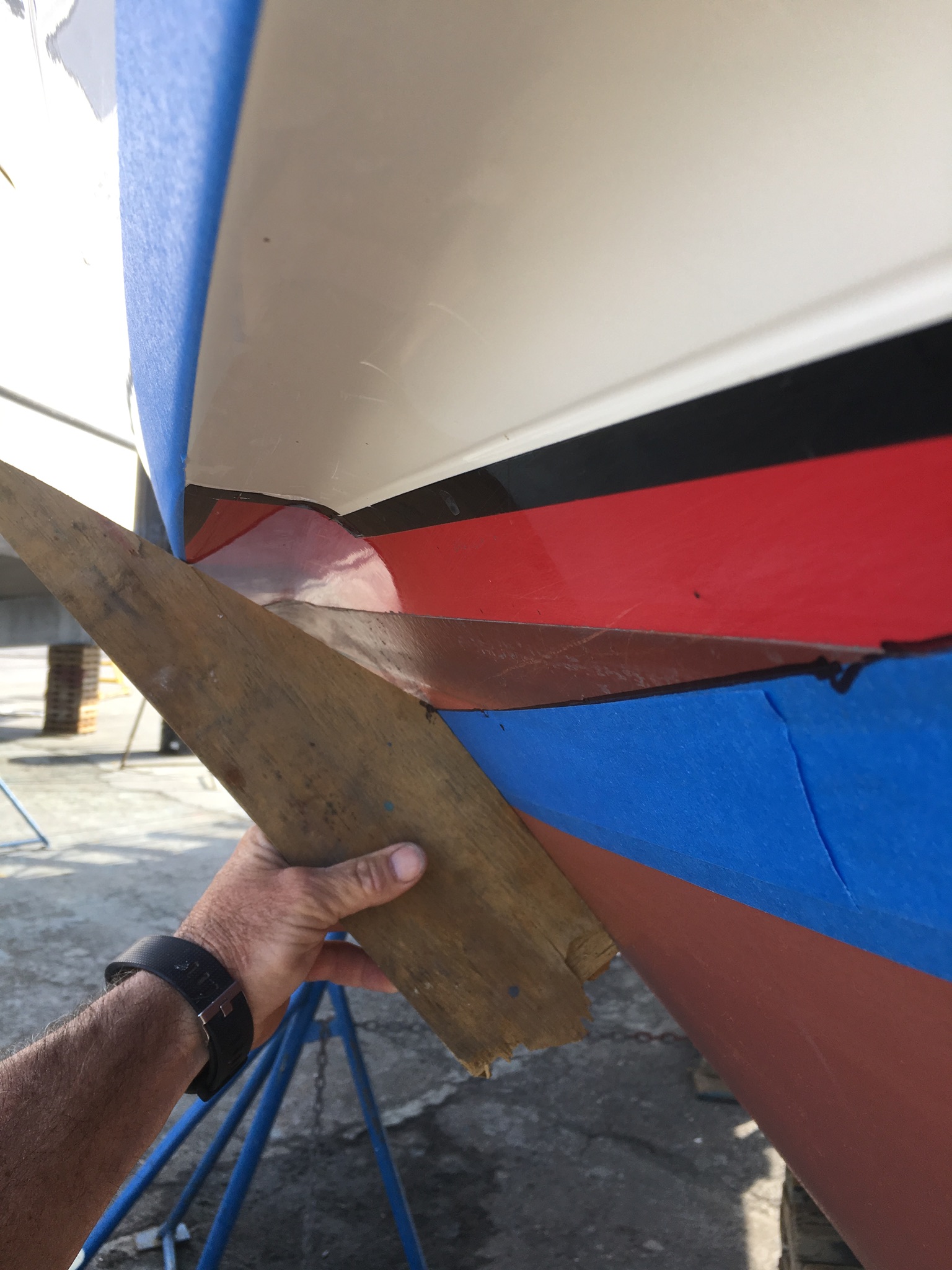 |
| Outline of the area that needed the gel coat removed |
|
Determining the fill depth |
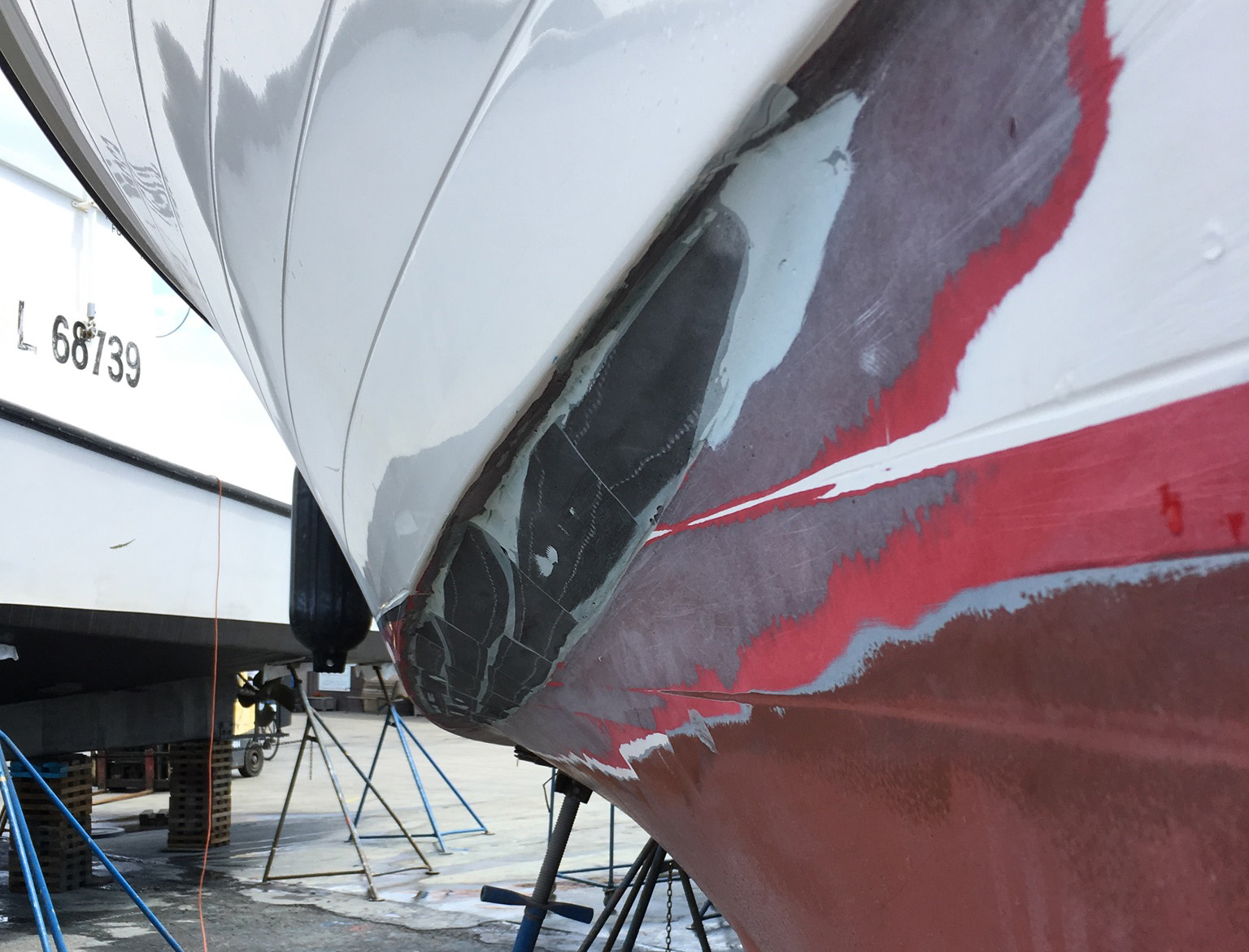 |
|
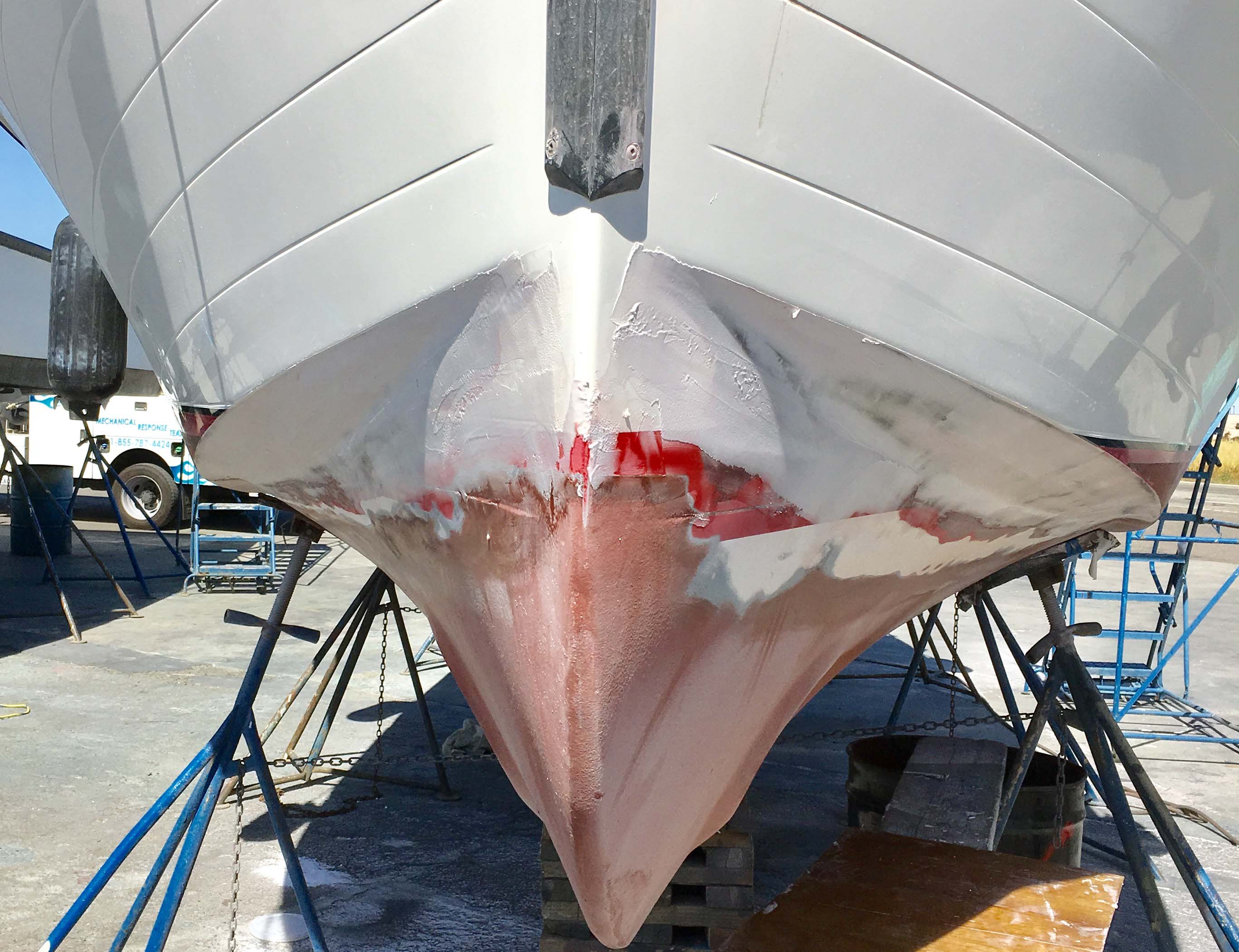 |
| Coosa blocks glued in |
|
Gaps in Coosa blocks filled in |
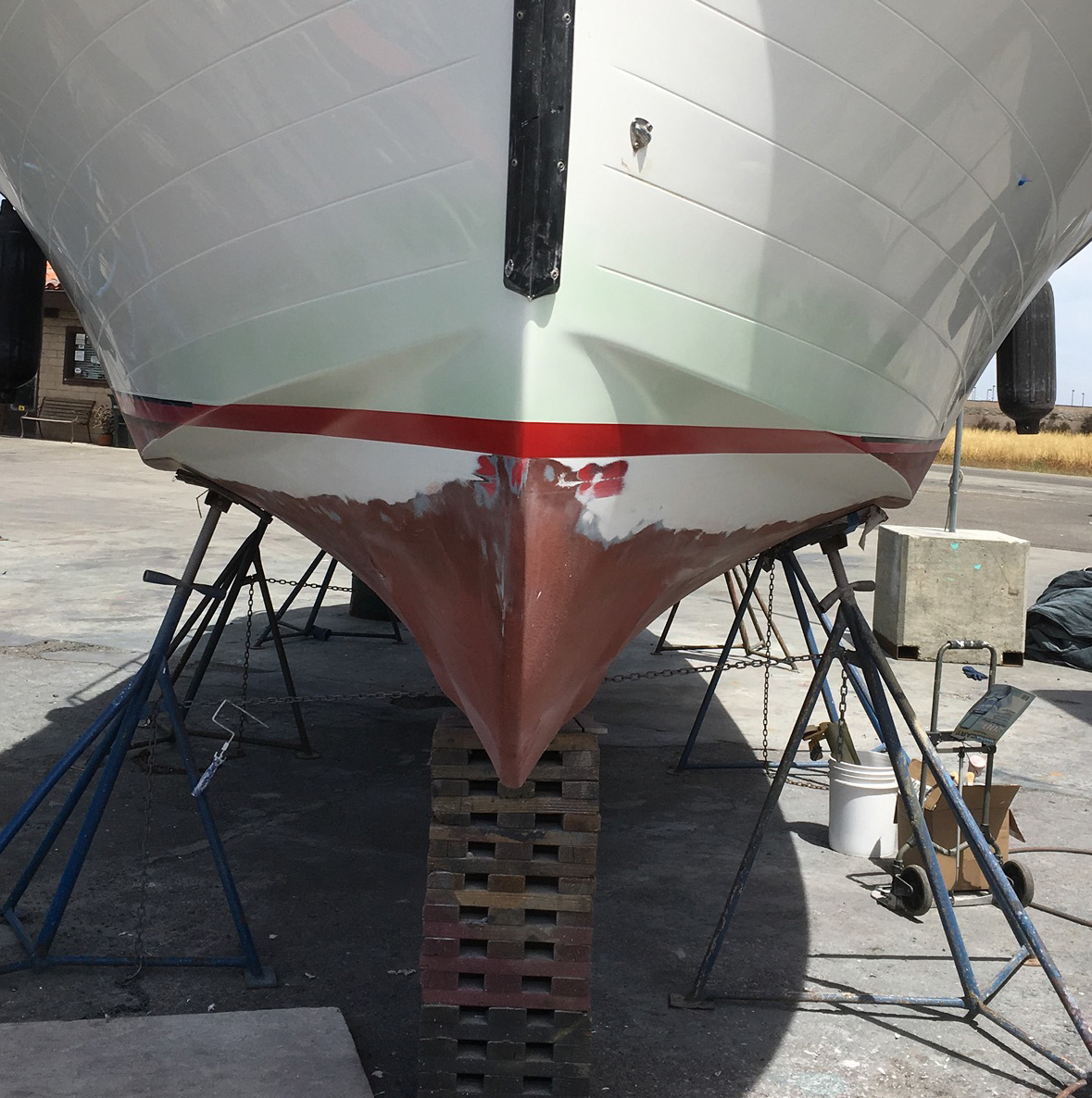 |
|
 |
| Glassed and gel coated |
|
Bottom painted |
|